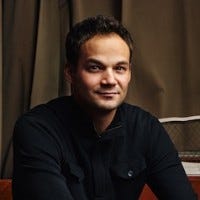
Featured Blog | This community-written post highlights the best of what the game industry has to offer. Read more like it on the Game Developer Blogs.
Dead Rising 3: Zombies need lots of music
Capcom Vancouver Music Director, Oleksa Lozowchuk, gives a quick breakdown of what went into producing the soundtrack for Dead Rising 3, and some main takeaways from the experience.

Here’s a quick breakdown of what went into producing the soundtrack for Dead Rising 3, and some main takeaways from the experience.
Music’s Role
The music in Dead Rising 3 had some specific roles to play: help set the tone for the game; create tension through feedback, provide ear-candy and punctuate memorable moments for the user. The game features an open-world larger than the previous two games combined, so it required a lot more music: 10+ hours to be specific.
Darker Tone
Early on we experimented with various styles to see what would gel with the ‘darker’ direction DR3 was taking, compared to the more colorful DR2. We needed a consistent palette that was both accessible and true to the overall art direction of the game. The best fit was a mash up of the 80s and classic horror. A lot of inspiration came from minimalist thriller soundtracks of the 1980s: lo-fi palettes, heartbeat-like pulses, dirty synths, eerie drones and basic forms of melody. We felt the end user would recognize the familiar B-rated horror palette when remixed, and immediately get the ‘vibe’ of the game. By extension, the artists involved could quickly latch on to keywords like Linn drums, monophonic synths or ‘chi-ca chi-ca’. The game experience is always book ended with a moody undercurrent, which combines these core musical elements, via the game intro/outro sequences, the pause menu tracks, the proximity-based mission objective tracks, and the cinematic underscore. By reinforcing a more serious tone throughout, we could contrast, and thereby, enhance any user-generated comedy, which the franchise is known for. (eg. Please Remember My Name, Ambient 6, Lust Battle, Nick Theme (extended), Gluttony Battle, Ambient 2)
Zombie Threat feedback:
To further support the tension of survival horror, we built a simple yet effective adaptive music system to feedback zombie threat to the user throughout the world. Each district had its own set of ambient drones to differentiate sand boxing and the lulls between encountering different concentrations of zombies. The drones were overlaid with interchangeable sets of low and hi intensity pulses ranging between 118-124 bpm. We’d contextually remix the various layers on the fly, based on a zombie threat formula culled from various game variables (# of zombies, distance to user, line of sight, etc.). Using the common palette, the content was minimalist, direct and often interchangeable, allowing us to leverage and extend a lot of the material at runtime. It also had a trance like/tribal rhythm that helped propel gameplay, and could cut through a dense mix. As the user hears the familiar motifs, each zombie horde encounter builds upon the preceding one - subconsciously increasing tension as the player roams the game world. (eg. ZT Pulse Ingleton, ZT Pulse Sunset, Ambient 3 )
Ear candy
That being said, constant tension can wear down the user, so we provided some ear candy and reprieve from the chaotic wall of sound via diegetic music (world based) scattered throughout all 4 districts. As a player enters a location with memorable source music, the adaptive threat score recedes, temporarily giving the user a sense of relief from the hordes of zombies. The colorful music also attracts users from a distance, luring them in to explore indoor locations throughout DR3’s large open-world. It’s a mash-up of contrasting music styles and genres: 8bit chip tunes, So Cal Punk, Pirate music, Spanish folk, German lieder, rockabilly, Romantic R&B, Latino rap, etc. We also correlated music with food, so there’s usually a higher concentration of cues wherever the player might find food. (eg. Uncle Billy’s Buffet, Speedy’s G-Spot, U Break Wi Fix)
Punctuate memorable moments
Music can really help provide memorable moments throughout the gameplay experience. One of the best ways is using songs since people tend to latch onto human voices and to remember lyrics. So, we increased the amount of songs in DR3, to highlight the game’s intro and outro sequences, important side missions and various signature locations throughout the world. We also produced custom songs for driving playlists in certain vehicles (sports car, muscle car, party van, etc.), for store advertising jingles, for district-specific accents, and for some character-driven boss and psycho battle cues (eg. ICUCMe, Chak De Phatte, Orbital Oscillation, Resistance, Keep On Rollin, Diego Battle, Wrath Battle, Don’t Walk Away, Lure). These songs were sometimes sung in other languages (eg. Spanish, French and German), adding yet another layer of depth to DR3’s overall manic experience. (eg. Je Chante Pour Ma Belle, Amo Americano, Du Bist Mein, La Esperanza, Levantaos Alba Nina)
Moreover, we incorporated some of the actual game characters into various music cues. For example, Bibi Love, one of the loved psychopaths from DR2, makes a Cameo appearance on a side mission quest, singing her follow-up hit in this new game: �‘Can’t Get Enough of Me’. As well, the game’s main actor, Andrew Lawrence, is featured singing lead vocals on ‘Fighting For Your Love’, a track written for the game’s protagonist, Nick Ramos. Originally, the track was part of a karaoke mini-game but was cut, so we fleshed it out into an ‘80s hit, and the track ended up making its way into the game’s 2nd end credits.
Since the Dead Rising world lends itself to experimentation, when appropriate, we also involved some of our dev team to perform on some of the game’s incidental music (eg. Pirate’s Catch). It was a nice stress reliever and counterpoint to the grind of game development, and sometimes you can find a real jewel who actually sounds like Barry White with a little bit of DSP help (eg. Annie’s XXX Supply).
Incentivize artists and collaboration
Finally, looking to the future, we wanted to streamline our music clearance process so we could focus on getting artists/composers to give us their very best. Most of the game industry uses a work for hire model when hiring musical talent to score or contribute to any game soundtrack. It’s usually an all-in buyout deal, to avoid any holdback risks associated with music rights. However, realistically, there is a limited shelf life for musical assets tied to games, as material is not recycled as often anymore, but rather new ‘inspired’ themes are written for franchises.
For us, as long as we secured all our needs with an exclusive term for the game and game-related projects, it made more sense to license original music. We’d identify the artists we wanted to work with, give them an idea of how many minutes of music we needed specifically for the game, and agree to license the music upon approved delivery. I strongly believe artists do their best work when they have a stake in the material they produce, and this was a way to maximize output, respect the contribution of artists, and strengthen creative collaborations for future projects. Some of the artists involved in the soundtrack include: Traz Damji, Sascha Dikiciyan, Brian Reitzell, Celldweller, Jeremy Soule, Julian Soule, Ashtar Command, Dave Genn, GIBS, Andrew Lawrence, Gaston ‘Cenzi’ Gabarro)
So, what did we learn from DR3?
When dealing with challenges of breadth, keep things simple and leverage what works.
Establish a clear game tone through a common musical palette.
Create memorable moments by tailoring unique content.
Review density of experience for optimal music placement.
Commission licensed music to create the strongest work.
Read more about:
Featured BlogsAbout the Author(s)
You May Also Like









